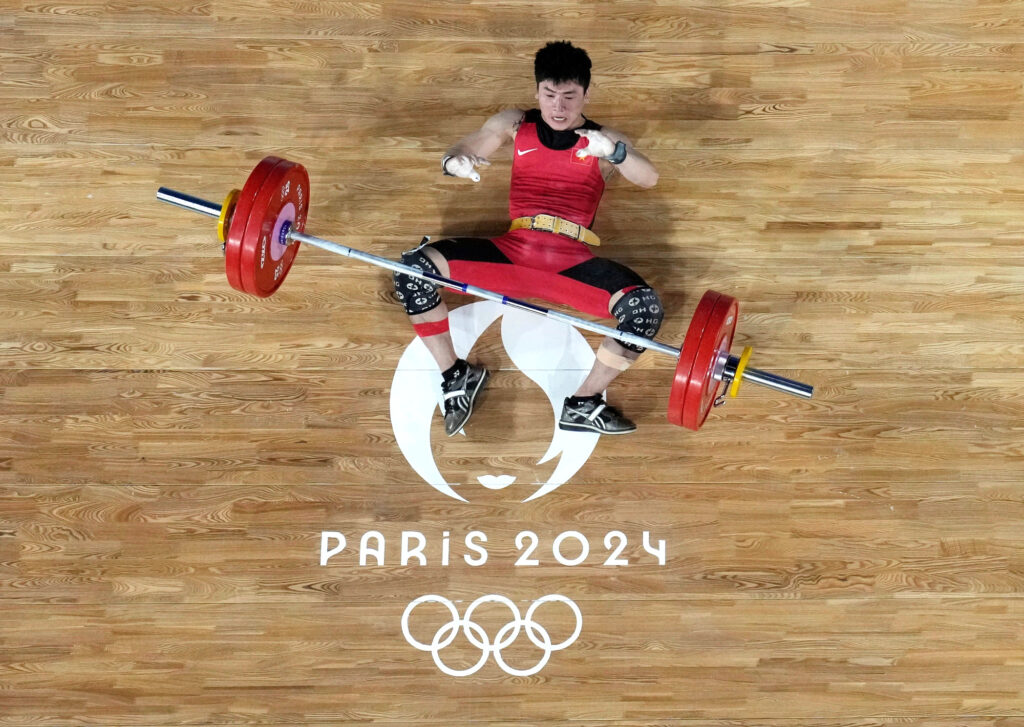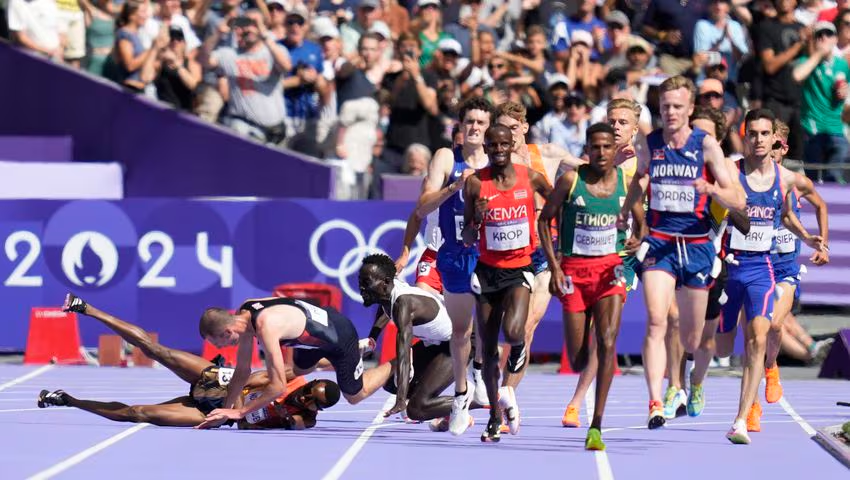Growing up I remember watching a television program every week called, “Wide World of Sports.” A famous phrase that host Jim McKay would always utter during the introduction was, “The thrill of victory, and the agony of defeat.”
Fast forward to today and along with millions of other people around the world, I am enthralled watching the Olympics this summer. The Games are full of moments when we get to experience the thrill of an athlete or team’s hard-won victory, and plenty of other moments where we feel the agony of defeat as keenly as if it were our own.
What makes each of these moments so poignant is how much hard work and personal sacrifice underlies each victory and defeat. Both winners and losers put in tremendous effort for years at a time just for an opportunity to make it to the Olympics, and their dreams of winning a medal can still unravel in an instant.

Leadership can feel a lot like that sometimes. You work hard and routinely sacrifice your ego for the benefit of your team members, customers, and the mission of your organization.
The truth is, outside of any financial compensation there are few extrinsic rewards, like medals, that are awarded for great leadership especially in the private sector. But the intrinsic rewards can be immense.
Olympic athletes remind us that you are much more likely to reap intrinsic rewards when you focus on developing your mindsets and behaviors alongside your technical skills. The Learn Lead Lift Framework® identifies six mindsets and five behaviors that are associated with great leaders. Similar to the iconic Olympic rings, they interact synergistically with leadership skill sets. One ring or element is not more important than another, nor can one mindset or behavior be left out and still be recognizable as either the Olympic rings or great leadership.
Which Learn Lead Lift® mindsets and behaviors could we observe at the Paris Games and what else can we learn from Olympians about leadership? Keep reading to find out.
The Mindsets of Olympians
People First. Mental health has emerged in recent years as a top priority for athletes like Simone Biles, and for leaders is a reminder that centering people’s well-being first and mission second positively impacts their performance. Simone Biles arrived in Paris ready to win because she got help and learned how to focus on her own needs,
She spent significantly less time in the gym and more time with her friends and family this training cycle than she had preparing for previous olympic competitions. Biles’ success reminds us that human performance improves when people have sufficient downtime, not from working longer and/or harder.
Identity Matters. Where we come from profoundly shapes our identities. When leaders treat identity as an asset someone brings to their team, such as when athletes compete for their country in the Olympics, it enhances their overall satisfaction, engagement and performance. When people experience a strong sense of belonging at work–the sense that “I belong here”–they are willing to exert more effort to help the organization succeed. Leaders who understand this reap the rewards of putting cultural competence and cultural humility into action for the benefit of their team.
Systems Thinking. What athletes put into their bodies, how they optimize their workouts and training environment impacts how they perform. On the world stage of the Olympics, we witness how the difference between winning a gold medal and not making the podium can sometimes be measured in hundredths of a second,
Systems thinking means focusing on long term goals and understanding the impact of how different actions we take today affect our ability to achieve our goals. Leaders need to cultivate similar long term thinking in addition to focusing on urgent issues of the day.
3T Model®. For any given set of circumstances, a leader’s choices inevitably come down to one of three “T’s.” We can either choose to Tolerate, Transform, or Transcend the situation. Cultivating a 3T Model mindset helps us become better decision makers because we choose a direction faster and with greater clarity about its implications.
Perhaps no Olympic athlete demonstrates a 3T Model® mindset as powerfully as those who competed in the debut of breaking (aka breakdancing) this year. Unlike with rhythmic gymnastics or artistic swimming, the athletes did not get to choose their own music, choreograph and rehearse their full routines in advance of the competition. Instead, a DJ would play something and the athletes would freestyle, meaning they would listen to the music and improvise their routines accordingly.
Admittedly, it’s an imperfect analogy because Tolerating the status quo in breaking would translate into athletes repeating their same moves, which is actually frowned upon by the judges. The point is that watching breakdancers in action reminds us that great leaders demonstrate a bias toward action coupled with keen contextual awareness informing a fluid chain of responses. Rigidity undermines performance.
Growth. Olympic athletes are open to innovation, incorporating the latest technology in eyewear or swimwear, for example, and frequently adjusting how they train. Today’s world record isn’t meant to stand forever, but rather becomes the new benchmark to surpass. Likewise, great leaders are curious, open to learning new tools and approaches, and motivated by the opportunity to help their teams set new performance records.

Grit:
Olympic athletes are some of the grittiest people on the planet. They model for us what it looks like to fail, get up and try again–over and over.
Great leaders also persevere and bounce back from failure and disappointment. They look for what they can adjust and then try again. They see speed bumps instead of stop signs when they meet resistance and don’t give up easily.
The Behaviors of Olympians
Focus. It’s impressive to witness the degree of focus displayed by Olympic athletes during competition despite all of the distractions they experience from the crowds, the cameras, and the constant pressure to perform. They somehow are able to block out the “noise” generated by live crowds, or ongoing media commentary to be fully present in the moment of competition. In addition to regularly “zooming out” to engage in long term, systems thinking, leaders also need to “zoom in” and shut out distractions so they can remain focused enough to successfully execute on whatever is most critical at this moment.
Integrity. To suggest that there may be a lot to unpack with this behavior against the backdrop of the Olympics would be an understatement. Ensuring fairness in athletic competition is one of the key values and priorities espoused by the International Olympic Committee (IOC). We witnessed fairness as it relates to integrity in scoring and athlete eligibility be called into question multiple times in Paris. From concerns regarding alleged state-sponsored doping of athletes from China or Russia, The Jordan Chiles bronze medal controversy, and questions regarding the eligibility of Algerian boxer Imane Khelif are two examples.
Integrity is hard for individuals to maintain when a perceived shortcut is available to them. It’s even harder for institutions to maintain and demonstrate integrity, but when they fail to do so, the repercussions due to lost reputation, goodwill, etc. can be catastrophic.
Leaders who prioritize integrity are not always rewarded for it by the public or by the institutions they serve, but people want to work with and for leaders they trust and respect.
Why do you want to be a leader, and who are you being as a leader are two key questions that can support both athletes and leaders in helping them navigate through challenges related to integrity.
Decisiveness. Solving problems today instead of waiting until tomorrow is one of the leadership behaviors people value most. At the Olympics, many athletes are required to make high stakes, split-second decisions while they are competing in the arena or on the field. Rugby, soccer and basketball all provide great opportunities for us to witness decisiveness in action because the dynamics of these games change so rapidly.
Hesitation, in these cases, rarely pays off and the same can often be observed in leadership.
Authenticity. Just like in many workplaces, Olympic athletes increasingly seem to embrace unique forms of self-expression on and off of the field. It’s worth remembering that authenticity in leadership goes far deeper than self-expression. Authenticity in leadership also means freely admitting that you don’t have all the answers all of the time, and occasionally you will make mistakes. In other words, you can own both the fact that you are great at what you do, and you are imperfect. Authenticity grants permission for others to be great and imperfect, too.
It’s also about showing people enough of who you really are that your team members feel safer directing their energy towards results instead of trying to cover up who they love, how they live and where they came from while at work.
Humility. Many Olympic athletes and leaders are described in negative terms for “having a chip on their shoulder,” as if they should display more modesty in their accomplishments. At the same time, they are usually quick to thank the many other people who have supported them along the way. They remind us that “I” rarely accomplish anything alone–”We” do.
I wonder what would happen if instead, we collectively were better able to distinguish between true humility (We did it vs. I did it) and false modesty (I’m not all that great vs. Yes, I am indeed, the GOAT.) The downside of too much modesty for leaders is that it doesn’t tend to inspire our confidence in them. Likewise, false modesty often backfires because people tend to see right through it.
In Closing
Since I first began writing this post, the closing ceremony of the Paris Olympics has come and gone. Native parisians who left the city to avoid the spectacle of the Games have started to return home. And, the Olympians with their family and friends in tow are slowly making their way back to their real lives.
I wonder how we and they will have been changed by our 2024 Olympic experience. What lessons have we learned, and how will we apply them as leaders in other arenas or fields of play? The good news is we don’t have to wait another four years to find out. Each of us can get started by putting our new leadership insights into action, today.
Interested in learning more about The Learn Lead Lift Framework® and how it enables leadership performance? Visit www.WeAreKadabra.com or contact us at hello@wearekadabra.com.


 Heather Leavitt-Martinez (she/her/hers) – Senior Product Manager
Heather Leavitt-Martinez (she/her/hers) – Senior Product Manager Wendy Ryan (she/her/hers) – CEO
Wendy Ryan (she/her/hers) – CEO Shawn Bunger (she/her/hers) – Senior Consultant
Shawn Bunger (she/her/hers) – Senior Consultant Crystal Whiteaker (she/her/hers) – Senior Consultant
Crystal Whiteaker (she/her/hers) – Senior Consultant Gail Finger (she/her/hers) – Senior Consultant
Gail Finger (she/her/hers) – Senior Consultant Monica Silkwood (she/her/hers) – Director of Operations and Experience
Monica Silkwood (she/her/hers) – Director of Operations and Experience Johanna Lyman (she/her or they/them) Senior Consultant
Johanna Lyman (she/her or they/them) Senior Consultant Sherri Horan (she/her/hers) – Senior Consultant
Sherri Horan (she/her/hers) – Senior Consultant
